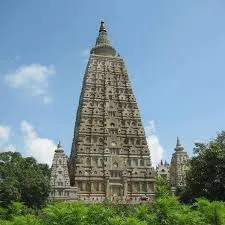
The Mahabodhi Temple, among the rare remaining instances of early brick structures in India, has wielded substantial influence in the evolution of architectural practices throughout the centuries. It stands as a remarkable testament to the late Gupta period, being one of the earliest and most impressive structures constructed entirely from brick. Additionally, the intricately carved stone balustrades exemplify early stone sculptural reliefs at their finest.

The Temple Complex holds direct connections to the life of Lord Buddha (566-486 BC), serving as the location where he achieved supreme and perfect insight in 531 BC while meditating under the Bodhi Tree. It serves as an invaluable repository of historical events associated with his life, especially following Emperor Asoka’s pilgrimage to this location around 260 BC when he constructed the first temple at the Bodhi Tree site. Situated at the very heart of Bodh Gaya city, the Mahabodhi Temple Complex comprises the main temple and six sacred sites enclosed within an area, with a seventh site, the Lotus Pond, just outside the enclosure to the south.
The most significant of these sacred sites is the majestic Bodhi Tree (Ficus religiosa). This remarkable tree stands to the west of the primary temple and is believed to be a direct descendant of the original Bodhi Tree beneath which the Buddha underwent his enlightenment during the First Week.
Moving north along the central path, on an elevated platform, you’ll find the Animeshlochan Chaitya (prayer hall), where it is believed the Buddha spent the Second Week. For the Third Week, he walked back and forth for 18 paces in an area known as Ratnachakrama (Jewelled Ambulatory), situated near the north wall of the primary temple.
The location where the Buddha spent the Fourth Week is Ratnaghar Chaitya, positioned to the northeast near the enclosure wall. Just after the steps of the eastern entrance on the central path, there is a pillar marking the spot of the Ajapala Nigrodh Tree. Here, the Buddha meditated during his Fifth Week, responding to the inquiries of Brahmins.
During the Sixth Week, he resided next to the Lotus Pond, located to the south of the enclosure. The Seventh Week was spent under the Rajyatana Tree, which is now identified by a specific tree.
